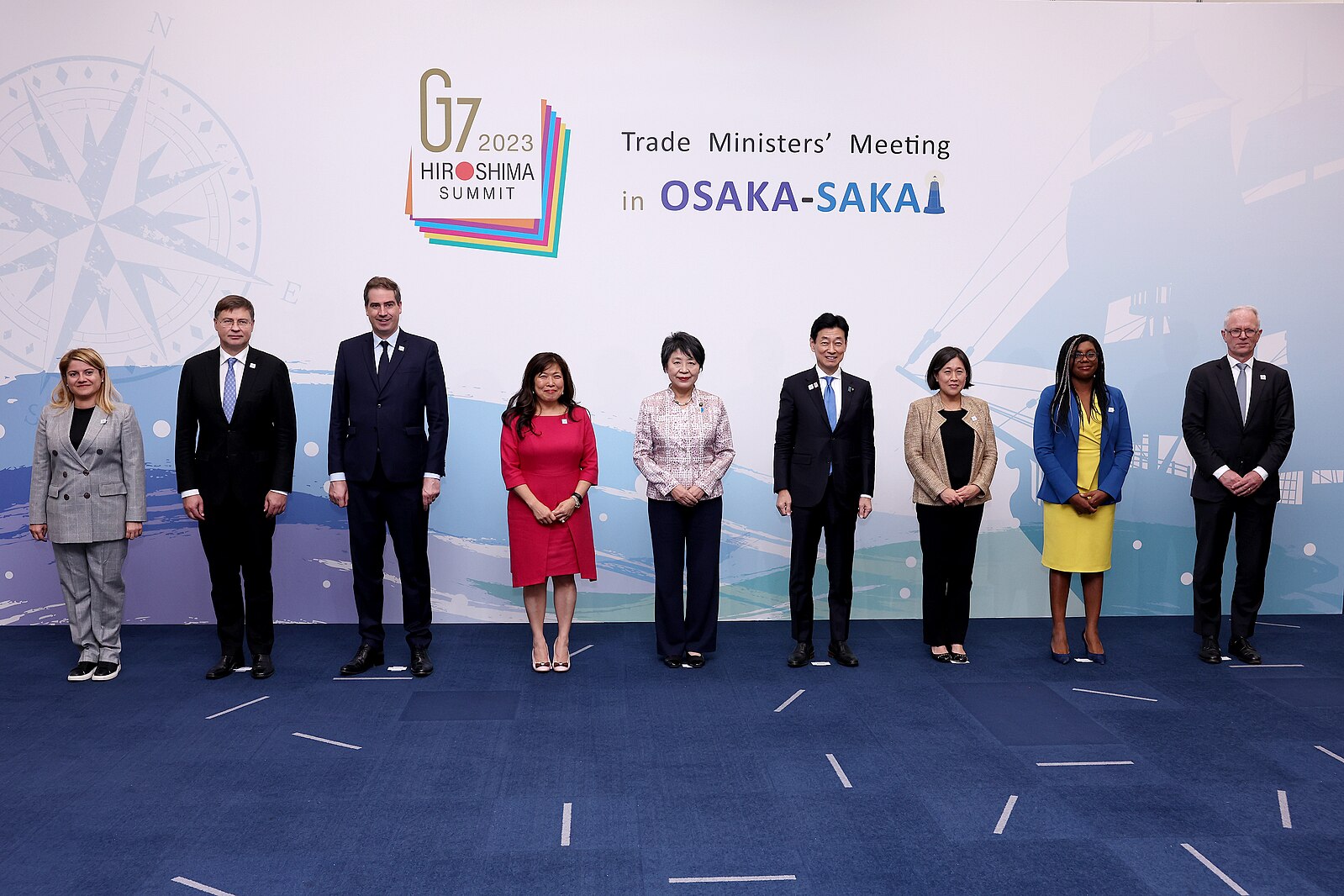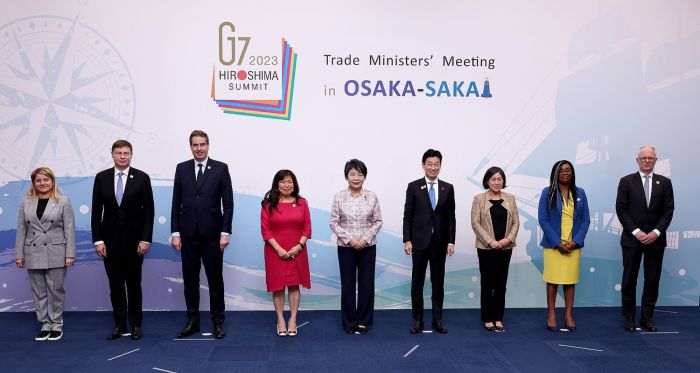Global trade is changing. It is buffeted by international and domestic pressures, from security tensions to climate burdens and technological innovation. Security competition is intensifying trade between ‘blocs’ and recalibrating long-standing trade dynamics. Conflicts in Europe and the Middle East are roiling supply chains already waylaid by the COVID-19 pandemic. Countries are using environmental measures to restructure production and trade. And technological shifts are accelerating trade facilitation while creating new challenges for countries that have not effectively regulated their digital economies.
Such challenges pose obligations, burdens, and expectations for countries like Canada that rely greatly on global trade for their economic growth and prosperity. Canada must prepare for an increasingly contested, complicated, and fractious global trade landscape that will only become more onerous to engage, negotiate, and leverage.
Four megatrends are dominating global trade:
First, U.S.-China security competition continues to cast a shadow over the trading system, affecting and rewiring regional economic partnerships. This seemingly persistent rivalry is compounded by muscular industrial policies from both countries and other powers (such as the European Union), further distorting trade patterns. Both ‘friend-shoring’ and ‘near-shoring’ could accelerate, despite constraints, with countries such as Mexico, South Korea, Thailand, and Vietnam benefiting disproportionately.
Yet, the adverse impacts could also be widespread, as this competition navigates terrains spanning semiconductors, artificial intelligence (AI), and electric vehicles. The battle for chip supremacy will reverberate across industries, affecting technological innovation and the climate transition. A potential restructuring of the global economy into blocs could reduce global GDP over the next few years.
Second, besides U.S.-China competition, other geopolitical fault lines (in Ukraine, the Middle East, and the South China Sea) will further stress world trade. Trade between regions is slowing as intra-regional trade grows. Southeast Asia, in particular, continues to benefit from this dynamic, at least for now. U.S. tariffs and export controls are pushing multinational firms to relocate manufacturing from China to Southeast Asia, boosting foreign direct investment and creating more jobs.
Firms are pivoting by reconfiguring cross-border supply chains, lowering costs, rethinking business financing, localizing innovation in certain markets, reorganizing functions like hiring, reassessing their exposure to geopolitical hotspots, and developing new revenue streams. Risk management for firms will increasingly entail understanding how Indo-Pacific countries, historically not central to global trade, operate and move. Governments and firms must also internalize the notion that economic security is critical and craft a playbook that maintains and protects resilience given unpredictable geopolitical events.
Third, trade patterns, tensions, and preferences intersect, drive, and occasionally conflict with the unfolding energy transition as countries craft policies to mitigate climate change. Climate change is already affecting trade. Firms have to adopt low-carbon business models to become and/or remain globally competitive. Increasingly, sustainability will be commercially priced and included in the cost of doing business. New investment opportunities accompany climate mitigation. Some developed countries are strategically using trade-related environmental policies, littered with requirements to measure and verify the environmental footprint of imports.
These burdens fall on unprepared and unhappy trade partners. It will therefore be critical for governments, firms, and interest groups to share vital information with respect to compliance as policies like the EU’s Carbon Border Adjustment Mechanism (CBAM) become mainstream. The CBAM works like a tax on energy-intensive European imports to ensure domestic manufacturers who produce similar goods are not competitively disadvantaged given their higher domestic standards.
That said, measures like the CBAM could also spur — and provide advantages to — developing economies to decarbonize faster, seizing opportunities in low-carbon energy like green hydrogen, fertilizer production, solar panels, etc. Finally, trade will become crucial in enabling flows of critical minerals, especially given their geographic concentration, to facilitate the spread of clean energy technologies that address issues such as pollution, carbon emissions, and electrification.
Fourth, technology is both enabling and constraining global trade. Although digital technologies are a key driver of trade, most countries have yet to effectively regulate their domestic and external effects. Digital trade measures have to be aligned across borders; this issue will become more important as countries pass laws on issues like data, AI, cybersecurity, and digital competition, which could affect digital trade.
For developing countries to benefit from digital services, they should create and support digital markets and provide adequate policy support related to privacy, consumer protection, and cybersecurity as their firms digitize. Simultaneously, developing countries will have to support broad-based digitalization, connecting citizens who lack broadband access. AI is already speeding up trade processes; it can further simplify supply chain management by enhancing inventory planning, production, and distribution. AI could also transform logistics planning and services as they move to optimal areas given production.

What do these trends portend for global trade?
These four trends could fragment the global economy further, as links and connections attenuate between specific ‘blocs,’ not within. This situation will likely fuel ‘reglobalization,’ splintering the global economy into highly competitive regions where trade and investment are concentrated and trade rules are harmonized. Security tensions and macroeconomic difficulties are compelling countries to bank on regions being and becoming new trade hubs and corridors, rewiring supply chains in the process.
Trade diversification for security reasons is precipitating new regional networks between ‘trusted’ partners that share security and economic concerns. This reality could spell trouble for Canada, which seeks to balance relationships with countries and not tether itself to any one camp. Friend-shoring and near-shoring are changing trade structures as countries reimagine economic partnerships to mitigate various risks.
Firms also appear to be pivoting after being subjected to shocks from the pandemic, the wars in Ukraine and Gaza, tensions in the South China Sea, and tariff rows between the U.S. and China. Countries like the United Arab Emirates and Singapore, which have solid and sophisticated trade infrastructures, will benefit.
Regionalization could thrive once again with potential costs and trade-offs for non-regional partners like Canada that appear strategically and institutionally distant. That Canada is reprioritizing trade within the Americas is positive, but that strategy must not come at the expense of deepening trade links in the Indo-Pacific.
The ‘choppiness’ of geopolitics is fuelled further by the recent industrial policies of China, the EU, and the U.S. Other powers, such as India, are still scarred by the pandemic, the ongoing climate crisis, and persistent supply chain difficulties. World Trade Organization rules have generally limited how countries use policies or subsidies to support specific industries within their borders to increase exports.
Yet, the selective application of these trade rules, due to China’s economic rise and experience, have altered the context around these efforts. National security considerations drive such policies given how specific goods and services can be weaponized by trading partners. According to Global Trade Alert, in 2023, countries used more than 2,500 policy interventions that were trade-distorting and discriminatory.
Considerations for Canada
What distinguishes this round of targeted interventions is that they are driven not by purely economic factors but a desire to strengthen resilience, protect national security, and advance climate mitigation. Resilience, rebuilding, and sustainability are now key trade objectives. These massive interventionist efforts to revive and restructure specific industries are hard for countries like Canada, which has limited fiscal capacity, to match. Canada and other smaller economies will find such policies untenable and unaffordable and will have to rely on other measures to compete.
Where does this scenario leave trade-reliant countries like Canada? Besides deploying capital to help various strategic industries, Canada has to take the lead in drafting, negotiating, and mainstreaming new forms of trade agreements with other ‘likeminded’ trade partners, including Australia, Japan, New Zealand, Singapore, South Korea, and the U.K., as well as with developing countries including Brazil, Indonesia, Malaysia, Mexico, and the Philippines, which find value in reviving and consolidating trade patterns.
Opportunities exist for these countries to drive trade initiatives now that the U.S., China, and the EU are disinclined to seek multilateral solutions to the trade challenges elucidated above. The U.S. has balked on trade given political difficulties while the EU’s trade and technology unilateralism sows resentment amongst its partners far and wide as they begrudgingly comply with European rules. China is not trusted to lead or drive multilateral trade solutions despite Beijing’s interest.
This situation generates space for other countries to explore newer agreements on trade issues like digital trade, green economy, and AI that advance mutual goals. Bilateral trade solutions such as the Australia-Singapore Green Economy Agreement (GEA) could serve as a viable template and example. Canada could benefit from such bilateral, open-ended, flexible agreements that facilitate green trade and investment across sectors to lower emissions.
The need to co-ordinate trade rules and standards is urgent with the regulatory demands for firms rising due to the extraterritorial effects of policies like the EU’s CBAM, General Data Protection Regulation, and EU Deforestation Regulation. Climate change and national security considerations have led to the proliferation of such measures. The competitiveness of firms and economies will become linked to the inking of coordinated trade rules and standards that help firms export goods and services.
Canada must deftly handle this complex landscape. Trade is no longer just trade; it is about establishing and correcting the conditions that enable countries to exchange goods and services and setting appropriate domestic rules to regulate problems and using those measures and market power to force compliance by other countries.
Trade, which plays a central role in Ottawa’s Indo-Pacific Strategy, relies on initiatives like trade missions, gateways, and agreements with India, Indonesia, and other Asian economies. These measures are necessary but insufficient for a region where trade is fundamentally strategic and inflected through issues like security, climate, and technological change. Canada’s trade policy must reflect and advance the ambitions of its climate transition, security concerns and interests, and technological strides. Anything less will not be fit for purpose.


